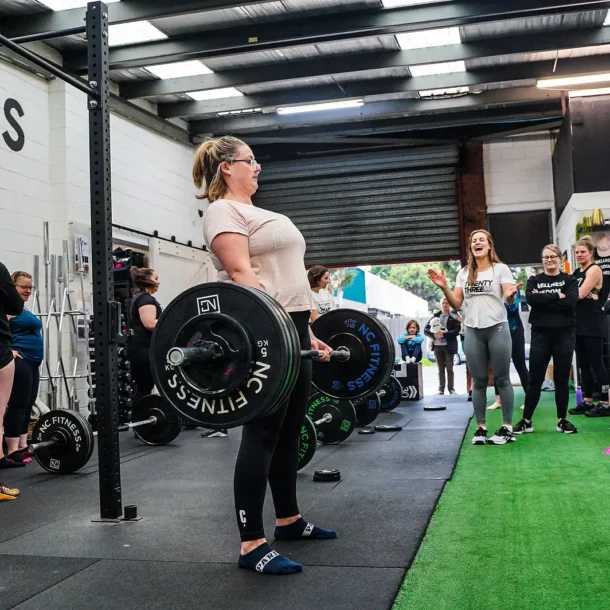

Pregnancy is such an amazing journey! As a personal trainer that specialised in pre and post natal exercise, I love the idea that my job is to help women ‘train’ for a successful birth and faster recovery.
As the end of the day, what women wants a longer, more complicated birthing process?
There is no doubt that being physically ready for the demand of labour is important, but often the need for balance, stability and mobility of the pelvis is overlooked.
Put simply babies move into the space that they have available.
During pregnancy, women should focus equally on creating space within the pelvis and soft tissues that support the uterus and baby.
When imbalances exits within the mothers structure, this causes the mother’s uterus to tip and then later making it difficult for the baby manoeuvre down the birth canal easily and safely.
There are many ligaments, muscles and facia that play an important role in support a growing baby, mother and pelvis.
While general aches and pains are a part of pregnancy, suffering through these symptom can sometimes be avoided, reduced or better managed. Before jumping into specific exercise that can help stabile the hips, you should fist seek to mobilise and release specific muscles, ligaments and facia. It is important to first pay close attention to daily activities that could be causing imbalances and weakness in the first place. Having a great body worker, such as a myo, osteo or physio, will provide needed relief throughout the 9 months, but you should not leave all the work up to them alone.
Here are four simple steps you can implement to look after your body and best prepare it for the big day.
Step One- Address poor posture
Poor posture for mum equals bad posture for baby. Consider the way you sit at work or on the couch. Sitting slumped with rounded shoulders weakens some muscles while tightens others. Equally you should avoid standing while pushing into one hip.
Fix it
When sitting, consider sitting on a Swiss ball or straddling a chair. Start from the feet up- ensuring that your feet are pointing forward, your legs are uncrossed, with your pelvis underneath you, shoulders back and down and chin tucked in.
Step Two- Rethink your movement
Consider the way that you get in and out of the car, step over objects and manourver in general. As your hips soften during pregnancy, extra care should be taken to keep your base of support narrow so that you do not put extra pressure on your pelvis and hips. Symphysis pubis dysfunction is a condition common issue among pregnant women where the ligaments that hold the pubic bone together become stretched. This results in an unstable pelvic joint and, often times, moderate to severe pain.
Fix it
You can reduce the risk of SPD by locking your knees together when getting in and out of your car, being mindful of long periods of time walking and avoiding side stepping positions that take the feet wider than the hips. Even simple movements like getting out of bed should be considered.
Step Three- Seek to balance your pelvic floor
Many women are told to ‘kegal’ during pregnancy but the relaxation phase of pelvic floor work is equally important. Further, the ultimate aim is for the pelvic floor to remain balanced. Movement patterns that load one leg at a time should be avoided and reduced in the 2nd and 3rd trimester.
Fix it
Squats are not only great at keeping you quads, hamstrings, and glutes strong, but also for balancing the pelvic floor. This will keep your pelvis strong and able to cope with the demands of walking and daily activities as you grow heavier in your later stages of pregnancy. Further, learning how to relax the pelvic floor is critical. You can do learn to do this by finding a quiet moment to fully melt into a supported seated, forward leaning or laying position, sigh out loud, and continue diaphragmatic breathing where you consciously breath into the belly. Further, attending a specialised prenatal yoga class can help to unlock tight and immobile areas of the body. Do not leave this to the last trimester to address.
Step Four- Exercise Wisely
Just because you see an Insta-celebrity running and lifting weight throughout her pregnancy, does not mean that this method applies to you too. You should approach you exercise regime with an understanding that you are preparing for labour and a faster recovery.
Seek the advice of a trainer professional. This person can listen to your individual needs and circumstances and help to develop an exercise regime that best suits you. Featuring highly in your program should be lots of myofacial release, squats, bridging, hamstring work and back strengthening exercises.
Do you want to know more about how to prepare for a successful pregnancy and labour? Follow Ange @ange_drake for more tips and tricks.

Ange Drake is an personal trainer, women’s empowerment coach and fitness blogger in the northern suburbs of Melbourne. She is the director of one of the few womens’ only strength training gyms in Melbourne, 23W. Ange helps women to learn how to use strength based training, nutritional strategies and a positive mindset to transform their bodies, relationship with food and mind.
Can’t decide which of our packages is best suited for you? Take our questionnaire to help you decide!





